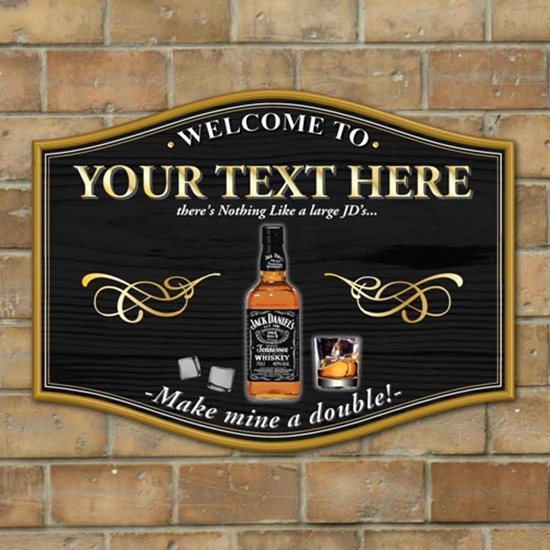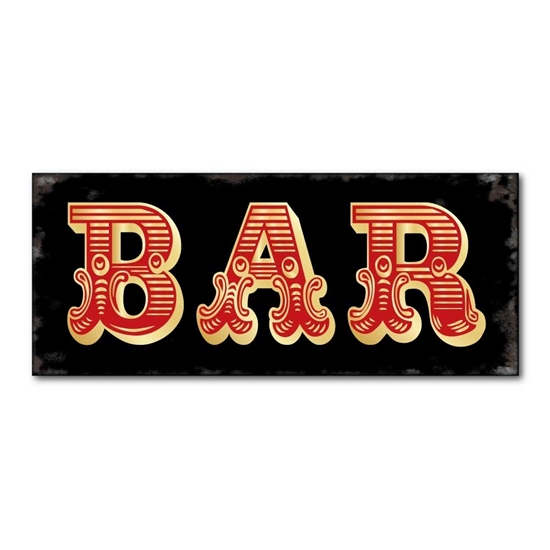Location can make a big impact on the effectiveness of bar signs. The style, design and location. are adapted to specific locations. Here's a brief overview of how bar signs differ depending on their location: 1. Exterior Signs
The goal of the signage is to attract customers and to create an distinctiveness to the establishment.
Features: Beautiful and large and attractive, with lots of lighting fixtures that shine at night.
Materials: Durable, weather-resistant materials such as neon or vinyl.
Examples of these are: Name signs for main bars logo signs, main bar name signs and marquee signage above the entryway.
2. Entrance Signs
Purpose: To welcome patrons and provide initial information.
Features: Clean, welcoming and often featuring branding elements.
Materials: Metal or wood signs.
Examples: "Welcome' signs, operating hours, or announcements about special events.
3. Interior Wall Signs
The purpose of the sign is to add style, convey information, and create a mood.
Features: Available in a variety of sizes and styles that match your interior decor.
Materials: Wood, metal, chalkboard, acrylic.
Examples include menu boards, decor signs and inspirational quotes.
4. Signs for Behind the Bar
The purpose is to highlight important aspects of the bar, such as its name, its signature drinks or specials.
Highlights A prominent and well-lit focal point.
Materials: LED, neon, digital displays, chalkboards or digital displays.
Examples: Digital menus, digital drink specials boards, and name signs for bars.
5. Signs for the ceiling and hanging
The purpose is to enhance the decor or provide directions from above.
Features Suspended from the ceiling, it is visible from different angles.
Materials These are lightweight materials, such as foamboard, acrylic, or even metal.
Examples: Directional arrows decorative hanging signs and themed props.
6. Tabletop Signs
The purpose is to provide patrons with specific information on their table.
Features A small size that is easily readable when viewed up close.
Materials: Wood, acrylic and laminated paper.
Examples include Drink Menus, Table Numbers, Promotional Card, and QR Code Stands.
7. Restroom Signs
Use: To determine the locations of restrooms.
Highlights: Very noticeable with distinct symbols.
Materials: Metal, plastic, wood.
For instance, there are men's and women’s restroom signs.
8. Directional signs
Purpose: Guide customers to different areas of the bar.
Easy to read labels and arrows.
Materials: Metal, acrylic, wood.
Examples: Signs pointing towards restrooms, exits, or various seating areas.
9. Window Signs
The purpose is to attract attention to the bar and also inform passers-by.
Features: Easily visible from the outside, and often including lighting.
Materials: Vinyl decals, neon, LED.
For example: promotional signs, operating hours, and event announcements.
10. Signs for events and promotions
Use: To inform customers about special events, seasonal promotions, or other special offers.
Highlights: Attractive and often temporary.
Materials include: Foam board, vinyl, chalkboard.
Examples: Event posters or banners.
Location-Specific Considerations
Visibility
Exterior and entrance signs Signs for entrances and exteriors should be easily seen to draw customers.
Interior and Behind the Bar Signs They must be strategically placed for maximum impact.
Durability
Exterior Signs. Materials must be weatherproof.
Interior Signs: Use a broader range of materials since they are shielded from the elements.
Aesthetic Integration
The signs for behind the bar as well as decorative signs: These should be a complement to the theme and design of the pub.
Directional and informational signs are meant to be useful however, they should also blend with the overall decor.
Functionality
Directional and Restroom Signs: Should be clear and simple to read to ensure patrons can navigate the space quickly.
Signs for events and promotions They should be able to be changed or temporary in order to reflect current products.
Lighting
Signs for windows and exteriors: Illuminated to improve visibility at night.
Interior and Behind-the Bar Signs Utilize lighting to create ambiance or highlight specific areas.
By adjusting bar signs' layout, design, and even the materials to their exact locations the owners of bars can increase the practical and aesthetic appeal of their establishment, thereby creating an atmosphere that is comfortable and unified. View the most popular bar sign hanging tips for blog info including pub signs for home bars, pub signs made, pub signs made, a bar sign, to the pub sign, personalised cocktail sign, pub sign hanging, bar sign outdoor, hanging pub signs personalised, personalised signs for home bar and more.

What Are The Distinctions Between Bar Signs With Regard To Durability?
Bar signs differ in terms of durability depending on the material used the construction site, as well as the intended usage. Bar signs vary in durability. Material
Metal signs are immune to corrosion and last a long time, so they can be used in the outdoors.
Solid wood signs can be sturdy, but they require some care especially if they are used outdoors.
Acrylic: Acrylic signs are lightweight and durable. They are also resistant to exposure to the outdoors.
Neon/LED neon signs are known to be delicate and easily damaged. LED signs, however, are durable, and they are also more efficient in energy use.
2. Weather Resistance
Outdoor Signs - Signs placed outdoors need materials and finishes which are not susceptible to corrosion, fading, or water damage.
Indoor Signs: Even though they're not exposed to harsh weather, indoor signs should remain resistant to humidity, temperature fluctuations, and wear and tear.
3. Construction
Solid Construction: Signs with sturdy frames, reinforced corners, and sturdy mounting equipment are more resistant.
Signs with sealed electrical components: Signs that have sealed electrical components (for lit signs) are less prone to water damage.
4. Maintenance Requirements
Bar owners who are busy will appreciate signs that require only minimal maintenance, for example, periodic cleaning.
High Maintenance: Signs with intricate designs, delicate materials, or special maintenance requirements could be more costly and time-consuming to upkeep.
5. Location
Indoor signs are generally less vulnerable to environmental hazards. They also may be less durable than outdoor signs.
Outdoor Signs Outdoor signs require more durability to withstand exposure to sunshine, rain, wind, and temperature fluctuations.
6. Resistance to Impact
Signs with heavy-duty requirements: Signs designed for high-traffic areas or locations that are susceptible to impacts (e.g. bars that are crowded) must be constructed of robust materials that are resistant to denting or scratching.
Protected surfaces: Signs with protective coatings and laminates are less prone to damage caused through vandalism, spills or scratches.
7. Longevity
Longevity: The signs are made to last years of use without major degradation, and provide an attractive return on investment for bar proprietors.
Signs for short-term use The signs that are designed to be used only for promotional events or other occasions, may not require as much durability as permanent signage.
8. Lighting
Lighting Components. Signs that use Neon or LED lighting must have components that are durable and long-lasting.
9. Environmental Impact
Signs made of recycled and sustainable materials may reduce the environmental impact. They offer durability and functionality.
10. Customization
Custom Options Signs which allow for customization have different levels of durability depending on their materials and methods of production.
Durability Advantages of Durability
Cost-Effectiveness Signs that last require less maintenance or replacement. This decreases long-term costs.
Brand Image - Signs of high-quality that last for a long time reflect the professionalism of bars.
Customer Satisfaction. Signs that are in good condition contribute to a positive client experience and improve the ambience of the establishment.
Bar owners can choose signage that is durable enough to last for years and provides value in their establishment by weighing factors like material, construction, placement, and maintenance. Read the recommended recommended reading on bar signs for home bar for website examples including a bar sign, bar sign design, pub bar signs, the staying inn pub sign, novelty bar signs, personalised pub, pub sign hanging, personalised hanging bar sign, pub signs to buy, personalised pub and more.

How Are Bar Signs Different From Regulations?
Bar signs are subjected to a myriad of rules by local, state and federal authorities to protect the public as well as aesthetic standards and conformity with the zoning laws. The rules for bar signs differ. Size and placement regulations
Zoning laws: These rules determine the size, height and distance of signs from roads, property lines or adjacent buildings.
Historical Districts. Signs of any size, styles, and materials can be banned in order to preserve the historic nature.
2. Illumination Restrictions
Light Pollution: To try to reduce light pollution, it is possible to control the brightness, color, and the duration of illuminated signs.
Safety Concerns Signs are not able to create glare and should not distract pedestrians or drivers especially when they are located near the road.
3. Content from the Signage
Alcohol Advertising: Alcohol advertisements are prohibited in some jurisdictions. They prohibit images or content that may be attractive to minors, or encourage excessive drinking.
Health Warnings: Laws could require signs to display health warnings about the risks of drinking alcohol or smoking cigarettes.
4. Historic Preservation Regulations
Architectural Compatibility Signs must match the style and character in the district that is historic. This often requires approval by commissions or preservation boards.
Signs are subject to restrictions in terms of their material, design, and colors to ensure that they are in keeping with the historical integrity.
5. Sign Permitting Process
Permit Requirements Owners of bars need to get permits prior to installing or modify signs. This could require paying fees, submitting designs, and obtaining local authority approval.
Code Compliance: To ensure accessibility and security for the public the signs must comply with the building codes as well as safety regulations and accessibility standards.
6. Maintenance and Removal of Signs
Maintenance Requirements. Bar owners have the responsibility of keeping the signs in good condition by ensuring they're safe from dangers and comply with all rules and regulations.
Sign that is abandoned: To stop blight in the area, and to preserve its aesthetic quality, regulations could determine the removal.
7. Digital Signage Regulations
Content Restrictions - Laws can restrict the content that is shown on digital signage, for example by prohibiting flashing lights and offensive imagery.
Restrictions on signs for operational use to reduce visual clutter, laws may restrict the luminosity of digital signage, their movement or the frequency at which they change.
8. Enforcement and penalties
Inspections. Local authorities conduct periodic inspections of signage to verify compliance. For violations, citations are issued.
Penalties - Penalties could include fines, court orders, orders for signs to be removed or modified as well as legal actions.
9. Sign Variance Process
Variance Applications Owners of bars have the option apply for a variance from the normal signage rules. This is done by proving that there is a valid reason for it and minimising any negative effects on the aesthetics or safety of the public.
Public Input: Certain variations may require community input for instance, public hearings or feedback from property owners and business associations, or comments from the community.
10. Community Engagement and input from the community
Public Consultation - Certain areas include community members in the design and the implementation of signage regulations through organizing public meetings or surveys.
Sign regulations can include provisions to improve the look of signage, encourage local businesses or assist in the revitalization of the neighborhood.
By knowing and observing signs regulations, bar owners can ensure that their signage improves the aesthetic appeal of their establishment, contribute positively to the surrounding community, and abide by legal requirements, while reducing the possibility of fines or penalties, as well as legal disputes. Take a look at the most popular bar runners for website recommendations including signs for garden bar, pub wall sign, personalised hanging bar sign, personalised home bar signs, large bar signs, home bar pub signs, personalised garden pub sign, make your own bar sign, personalised garden pub sign, personalised home pub sign and more.
